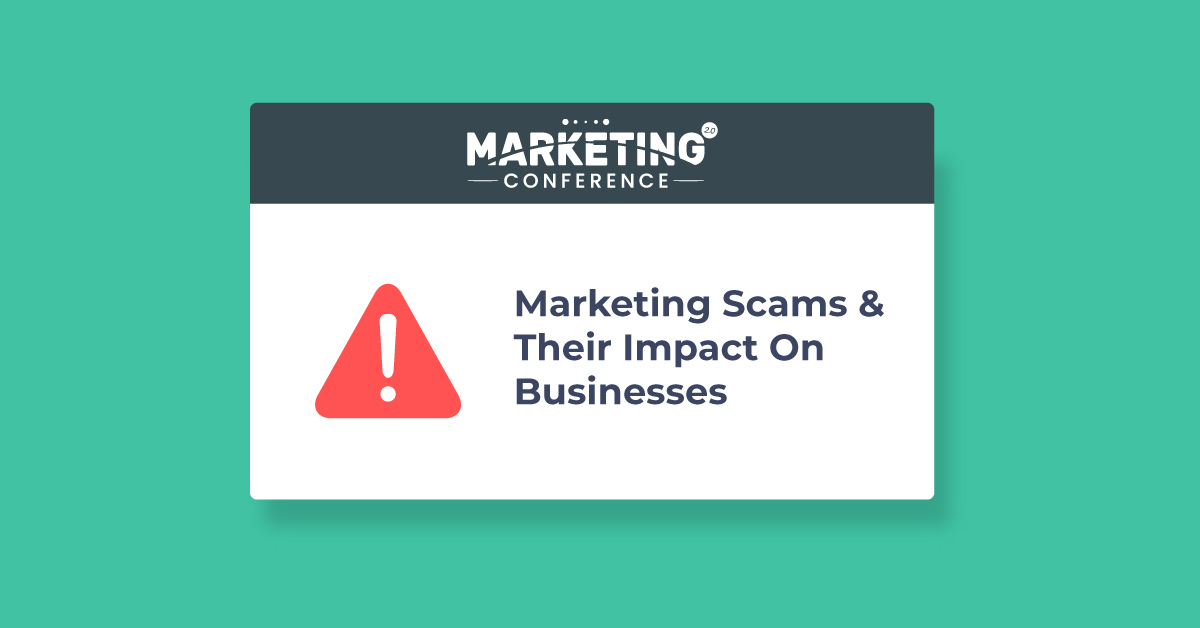
Marketing has evolved significantly in recent months. Still, the essence of it remains: marketing is a never-ending optimization effort. It is a never-ending cycle of learning and improvement.
Fortunately, marketers now have more sophisticated methods to reach and convert their target audiences. As the marketing industry embraces new technologies and tactics, fraudsters follow suit, posing many new challenges to marketing campaigns. Fraudsters will always follow the money, regardless of where the fraud occurs.
As discussed by panelists at the Marketing 2.0 Conference, if a marketer does not understand what a scam looks like in their industry, they will never realize there is a problem.
At the marketing conference’s upcoming Winter Edition, experts will share what is going on so that marketers can take control of their marketing efforts, reduce fraud, protect the whole martech stack, and deliver tremendous campaign success. They also suggest that every marketer must consider how they can contribute to the fight against marketing fraud to improve conversion rates and business results by ensuring they engage with real people.
While meeting aggressive margin and traffic targets, ad Networks and agencies may turn to cheaper methods of ensuring campaign delivery. The result, which a network or agency may be unaware of, can be a mixture of legitimate and fraudulent bot traffic, noted Marketing 2.0 Conference’s experts. We see fraudsters using several different threat models to take advantage of marketers:
Click Fraud: Perhaps the most well-known threat model, sophisticated bots are paid to view and click on advertisements, and the marketer is in the dark because of their human-like tendencies. When bad actors try to use bots to deliver ad activity for a campaign, they commit click fraud. As campaigns rely on less trustworthy inventory sources to meet click and margin targets, the inventory quality suffers, as do conversion rates.
Lead Fraud: Similar to click campaigns, when advertisers are under pressure to drive aggressive customer growth, the possibility of fraud on lead generation efforts increases. A sophisticated bot running on a natural person's device can fill out forms with that person's name and information, making it even more difficult for a marketer to detect fraud. This is exacerbated when the cost-per-lead (CPL) payouts are high, attracting fraudsters looking to steal the higher CPL payouts. To avoid detection, they direct bot traffic to landing pages, typically with form fills, and mimic human behaviors. This results in a large number of leads but fewer customers.
Retargeting Deception: Service providers use sophisticated bots to drive site traffic, populating data management platforms (DMPs) or customer relationship managers (CRMs), which are then used for retargeting bots. The retargeting provider can send bot visitors who have visited your site and are compensated for completed retargets/returning visitors.
After this, fraudsters falsely claim referral payments. As a result, the marketer continues to waste money and time by retargeting a bogus lead. Data influenced by bots can have a wide-ranging impact on your budget.
Competitive Assaults: Competitors' "black hat" (read "unethical") marketers use click bots to launch automated search queries, click on competitor ads to waste competitor budgets, and diffuse targeted marketing efforts. This is a standard threat model across all verticals, including Travel, Automotive, and Small and Medium-sized Businesses (SMBs).
Taking Action
When viewed through the larger marketing lens of campaigns, time, and annual spending, even a seemingly "small" percentage of fraudulent site traffic from sophisticated bots has a massive impact. At many sales and marketing conferences, such as the Marketing 2.0 Conference, experts believe that looking at rates can be misleading because even 1% can result in a significant amount of money lost due to marketing fraud. Instead, experts recommend looking at the sources to get the complete picture of potential fraud.
While this is a frightening reality, knowledge is power in this situation. We can begin to eliminate these threats by shining a light on the hidden impact of bad actors on marketing efforts.
Understanding these threat models is critical for marketers who want to improve the quality and effectiveness of their overall marketing strategy by focusing on real people rather than bots. This increases the effectiveness of marketing budgets and makes marketers brand heroes.

